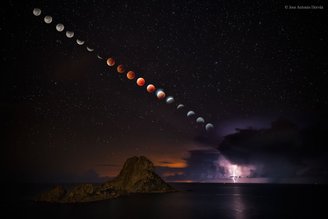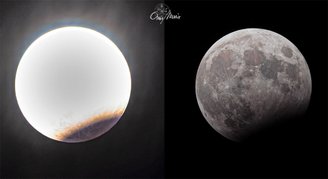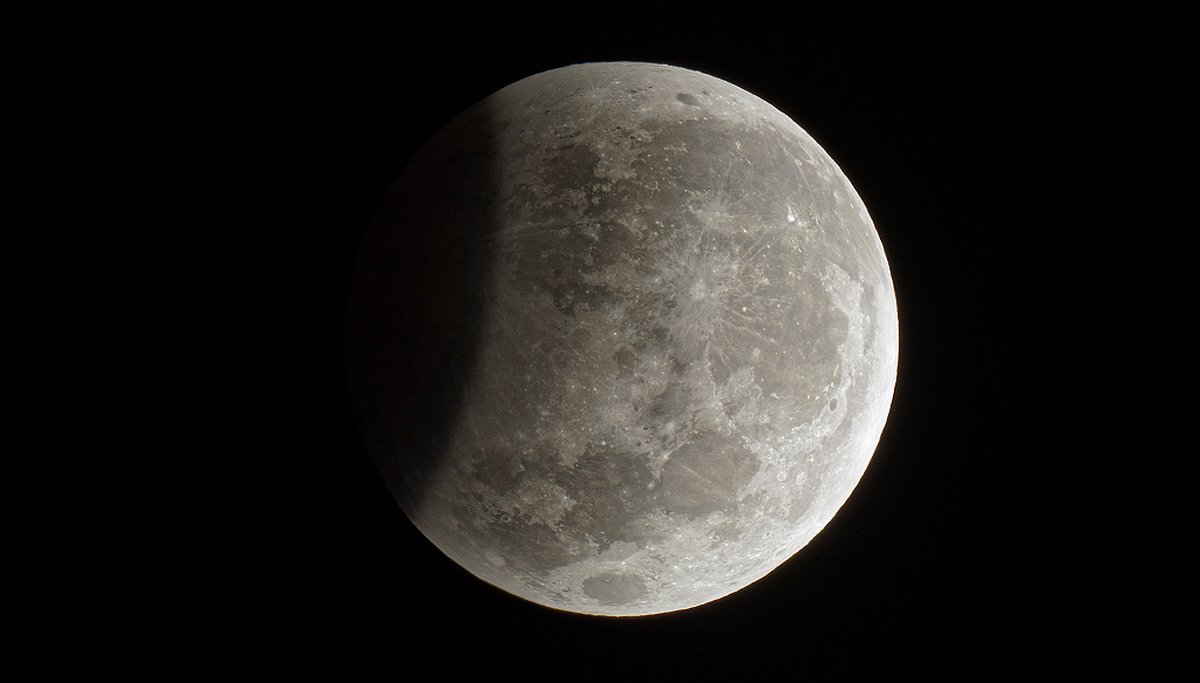A spectacular celestial show is about to take place on the night of September 17 and in the early hours of September 18: Partial lunar eclipse accompanied by a spectacular view of the Super Moon. While the eclipse itself is relatively subtle, the Supermoon promises to make the night unforgettable. So what exactly will happen at that moment, and why will the eclipse only be partial?
A lunar eclipse occurs when the Earth is perfectly aligned between the Sun and the Moon, and its shadow falls on its natural satellite. Unlike a solar eclipse, which can only be seen from certain parts of the world, a lunar eclipse can be seen from anywhere on Earth where the Moon is above the horizon. The phenomenon can be divided into three main categories: total, partial, and penumbral eclipses, depending on how the Earth’s shadow covers the Moon.
In the event of a total lunar eclipse, the entire Moon enters the darkest part of the Earth’s shadow, called the umbra. This creates a spectacular effect: the Moon takes on a reddish hue, Known as the “Blood Moon”It is formed when sunlight is refracted by the Earth’s atmosphere and reflected back to the Moon.
In a partial lunar eclipse, As we will see on September 17, only part of the Moon enters the shadow, the rest is still visibleThis creates an interesting contrast, with the part of the Moon covered by Earth’s shadow appearing slightly blurred, while the rest of the Moon remains as bright as ever. While the effect is not as dramatic as a total eclipse, it is a spectacular event that offers a clear look at the orbital mechanics that connect the Earth, Sun, and Moon.

The partial lunar eclipse on September 17 will be very limited in scope, with only a small portion of the Moon entering Earth’s shadow. It is estimated that about 0.08% of the lunar surface will be covered, making the eclipse subtler and even harder to spot for less alert observers. The event will begin when the Moon enters Earth’s penumbra, the outermost and least dark part of the shadow.
This phase is almost imperceptible to anyone observing, as the Moon’s light remains very close to its usual brightness.
As the eclipse progresses, the Moon will enter the umbra, and it is at this point that the “bitten” part becomes visible. However, since it will be a low-intensity eclipse, the change in brightness will be relatively smooth, making it difficult to observe with the naked eye, especially in areas with high light pollution or adverse weather conditions.

The eclipse will be visible in many parts of the world, including the Americas, Europe, Africa, Asia and Australia, but the exact time will vary by location. In Brazil, due to its vast land area, the start and end times also vary by region, but in general It will be visible in most parts of the country from 23:00 on the night of the 17th until 01:00 on the night of the 18th..
On the same night, a supermoon will also brighten up the night. This term is used to describe when the full moon is closest to Earth at a point in its elliptical orbit called perigee. On the 17th, the moon will be about 360,000 kilometers away from Earth, instead of the usual average distance of 384,000 kilometers. This proximity will make the moon appear up to 14% larger and up to 30% brighter than a normal full moon.

This coincidence adds another layer of complexity to the magic of the eclipse, as the supermoon’s intense brightness can dwarf the faint shadow cast by Earth. But it will also make the observation an opportunity for rare challenges: Witness the Supermoon at the same time as the partial eclipse.
On the night of September 17, we will remember the intricate celestial ballet taking place overhead, with the Earth, Moon and Sun in perfect harmony. So if the sky is clear, it’s worth taking a moment to look up and see these cosmic wonders in action.
Source: Tec Mundo
I’m Blaine Morgan, an experienced journalist and writer with over 8 years of experience in the tech industry. My expertise lies in writing about technology news and trends, covering everything from cutting-edge gadgets to emerging software developments. I’ve written for several leading publications including Gadget Onus where I am an author.













